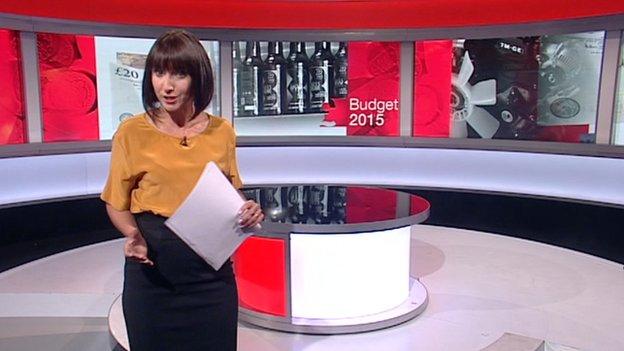Analysis: Wales Media Audit findings by IWA
- Published

The Institute of Welsh Affairs has published an audit of the media in Wales. It last carried out an exercise like this in 2008. BBC Wales arts and media correspondent Huw Thomas reports on some of the IWA's key findings, and its recommendations.
Television Viewing

Welsh crime drama series Hinterland is returning for a third series
If you're Welsh then the chances are that you spent last night glued to the TV. The IWA's audit notes that people in Wales spend an average of 251 minutes (four hours 11 minutes) per day watching TV, the highest of the UK nations. The figure has fallen over the past two years, with average UK levels of viewing dropping from 241 to 221 minutes per person per day.
The public service broadcasting (PSB) channels remain a popular option for viewers. In Wales, viewing of the main PSB channels (BBC 1, BBC 2, ITV, S4C, C4 and 5) accounts for 50% of all TV viewing. The spending by the channels in the nations of the UK between 2008 and 2014 is outlined below, where Wales and Northern Ireland compete for the bottom rung.

Among its recommendations for the television sector, the IWA says an extra £30m should be invested in BBC Wales to fund a greater variety and diversity of English language programmes.
The chart below, based on figures compiled by the IWA media audit team, illustrates the changing spending priorities for BBC Wales: entertainment and cultural programming has reduced, while budgets for news, sport and factual genres have largely been protected over the last ten years.

So where does BBC Wales spend its money? This next chart shows how there has been a slight reduction in total spending (just less than £6m) in the areas below when comparing 2014/15 with 2006/7.

No charts needed for this - S4C's financial plight is rarely out of the headlines. By now, the changes to its budget in recent years are well known. The channel claims it has suffered a real terms cut of 36% in funding since 2010.
The IWA argues that S4C faces a "cycle of decline" unless its current level of funding is sustained. It also calls for the channel's independence to be safeguarded, but for it to "maximise" its long-standing collaboration with the BBC.

TV technology
As we watch so much TV in Wales, we're investing in the best technology. Take-up of high definition (HD) TV in Wales is the highest of the nations in the UK - 76% of Welsh homes have full HD television sets, compared to a UK average of 73%.
While BBC One Wales and ITV Cymru Wales both offer an HD service, the IWA argues that BBC Two Wales and S4C should also make it a priority to begin broadcasting in HD. S4C had previously run an HD service, Clirlun, from 2010 to 2012, but gave up on account of its expensive running costs of around £1.5m a year.
Radio
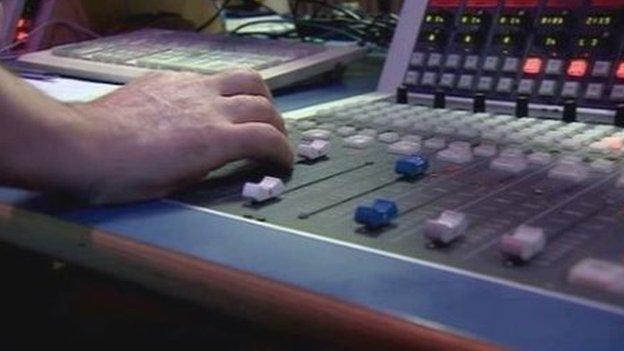
If we're not watching TV, we've switched the radio on. The audit found that more people in Wales listen to radio compared with the other UK nations, while Welsh audiences also listen for a longer period of time.
In 2014 the average listener in Wales tuned in for 22.4 hours a week. Despite being the highest figure for the UK, the figure has fallen by two hours since 2007.
The IWA media audit found that DAB (digital) radio coverage had increased significantly since its last audit in 2008.
By 2014, 65% of the population could access BBC Wales's radio services, Radio Wales and Radio Cymru, on a DAB radio compared with just 41% in 2008. Almost half (47%) of people in Wales claimed to own at least one DAB radio set.
In the commercial radio sector, two stations have closed since the IWA's last audit: Valleys Radio and Radio Hafren (formerly Radio Maldwyn). There has also been a significant consolidation of ownership of commercial radio stations, which the IWA says has led to some "confusing" brand and name changes.
A large proportion of radio users in Wales listen to UK network radio stations, leading the IWA to suggest that Radio 1 and Radio 2 should carry opt-out Welsh news bulletins.

Richard Gurner, editor and publisher of the Caerphilly Observer, says grant funding can help along the way
The decline in Welsh newspaper circulations has mirrored the global trend. The chart below illustrates the challenges facing some of Wales' most popular newspaper titles.
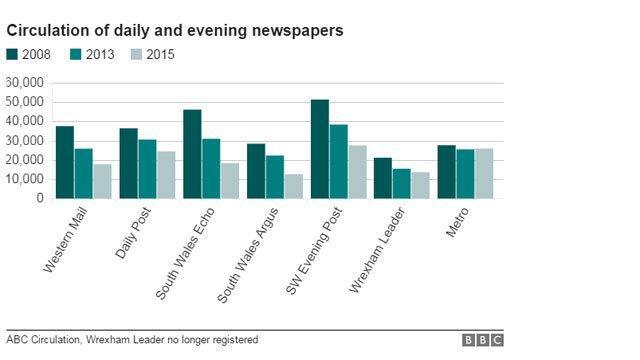
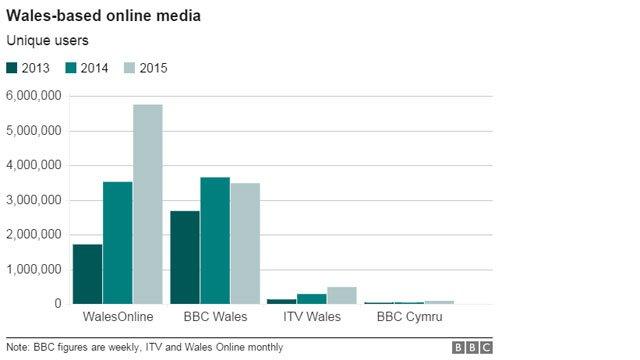
The IWA confirms that online sites are now the priority for most newspaper publishers in Wales, though print circulations continue to be an important source of advertising revenue.
While it found a substantial increase in the number of readers accessing newspapers' digital platforms, there had also been a continued reduction in the number of journalists employed in the sector.
In its recommendations, the IWA says the BBC should make its audio and video content available for use online by newspaper groups.
It also suggests that public funds could support some local news providers, with a recommendation that the Welsh government establishes a fund to support "innovative" local online news services.

Future monitoring

The summit in Cardiff on Wednesday
The IWA wants the Welsh government and the broadcasting regulator Ofcom to jointly commission a study of the future of local media in Wales.
The IWA's 2015 audit of the Welsh media was largely done by a small group of volunteer researchers and academics.
During its previous audit in 2008 it secured the support of the Welsh government, and the IWA recommends that ministers create an independent media advisory panel to monitor media trends in future.
The Welsh government said it was not currently planning to introduce such a panel, but it had not ruled it out.
- Published11 November 2015
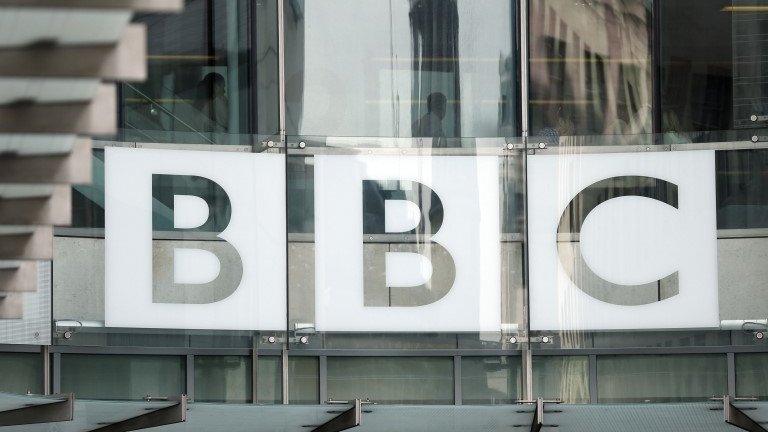
- Published11 November 2015
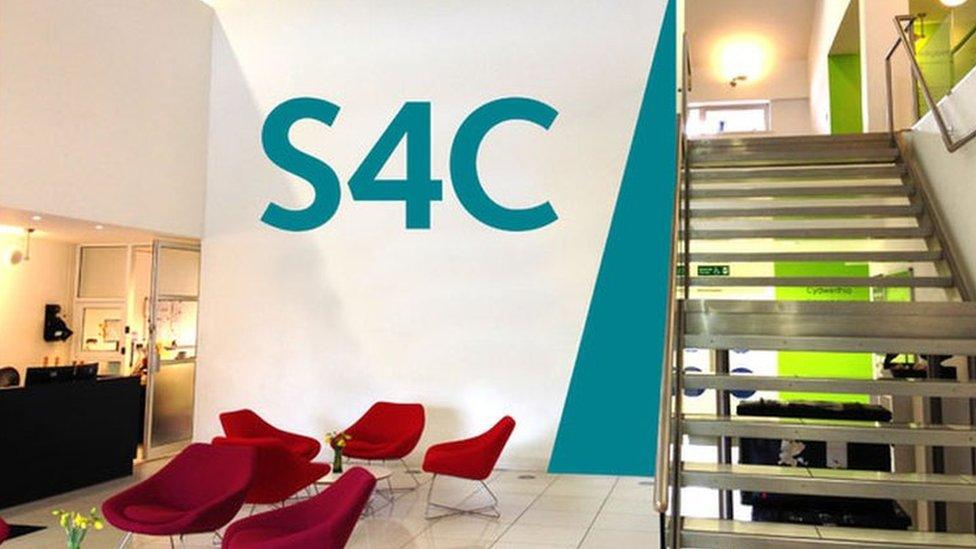
- Published10 November 2015
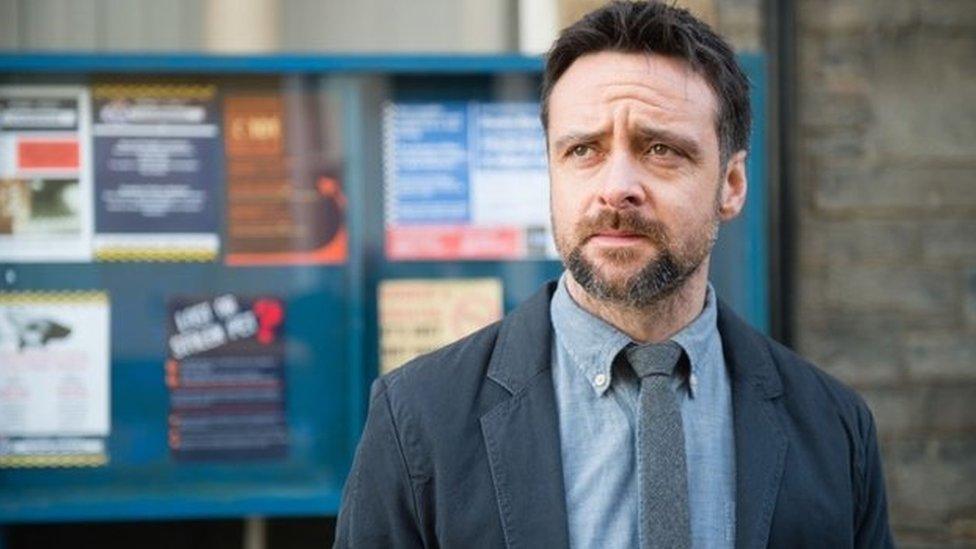
- Published17 August 2015
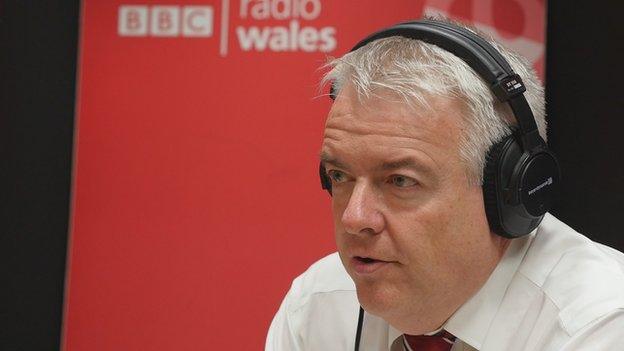
- Published7 September 2015
